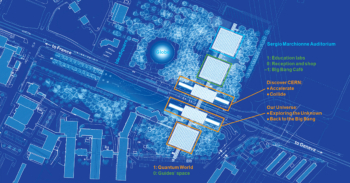New members of the editorial board look at the role of EPJC as a community journal.

As the field of high-energy physics moves inexorably towards full open access, under the SCOAP3 agreement, it is worth noting a fact that is often overlooked by the scientific community, namely the concomitant affirmation of the role of scientific journals. Indeed, journals will continue to stand – if not for primary dissemination of information, for the continued, independent and, yes, competitive and occasionally controversial quality assessment. An ecosystem of dedicated journals is precisely what this requires, on top of open pre-“print” archives of equally undisputed role.
Yet, looking at the broader landscape of physics and beyond, open access has quite naturally also brought other changes, namely the emergence of “community journals”. By including a variety of kinds of article, these break with the traditional scheme of long established journals, which are typically devoted to single article types, such as letters, regular articles, technical papers or reviews. To promote and foster this development is precisely the aim of The European Physical Journal C – Particles and Fields (EPJC), where all types of publications relevant to the field of high-energy physics (including astroparticle physics and cosmology) are considered.
EPJC has recently seen a series of significant changes in its editorial board. Since January, Jos Engelen (a former research director at CERN) is the new editor-in-chief of the “Experimental Physics” section. He succeeds Siggi Bethke, who successfully co-ordinated this section of the journal until the end of 2012. A few months earlier, the board of theoretical physics editors of EPJC was significantly enlarged. In addition to the traditional board of editors covering the area of “Phenomenology of the Standard Model and Beyond” (now called Theory-I), which Gino Isidori has co-ordinated since the end of 2011, Ignatios Antoniadis (the current head of the Theory Unit at CERN) has taken charge of a largely new board of editors covering the areas of gravitation, astroparticle physics and cosmology, general aspects of quantum field theories and alternatives (Theory II).
The latter developments take into account in particular the ongoing rapid “merger” of accelerator-based particle physics with astroparticle physics and cosmology. The next step for our journal will thus be to reach out to experimental non-accelerator physics to provide a first unified platform as a “community journal” in this further extended sense.
Next to letters, regular articles and reviews (tutorial, specialist, technical, topical scientific meeting summaries), EPJC is particularly keen to develop its “tools” section. Neither theory nor experiment in the traditional sense, this section is a platform for publishing computational, statistical and engineering physics of immediate and close relevance for understanding technical or interpretational aspects of theoretical and experimental particle physics.
Last but not least, there is another aspect by which EPJC wishes to stand out, namely in terms of quality assessment. Taking a lead from Karl Popper, science is a social enterprise and humans react quite differently depending on whether they are solicited personally to comment on quality and relevance or just passively, e.g. as recipients of mailing lists or other automated systems.
At EPJC, three independent levels exist to ensure quality control, each mediated by direct communication as peers in the field: the editors-in-chief, the editorial board and the referees. All of them will have been involved in the assessment and decision-making process for every single paper, ensuring a personal, unbiased and fair implementation of the refereeing process, which remains at the core of the activity of any reputable journal.
SCOAP3
The SCOAP3 consortium (Sponsoring Consortium for Open Access Publishing in Particle Physics), which aims to convert journals in high-energy physics to open access, has chosen two Springer journals to participate in the initiative. They are the Journal of High-Energy Physics, published for the International School for Advanced Studies (SISSA) in Trieste, Italy, and The European Physical Journal C, published with Società Italiana di Fisica. The selection is the result of an open and transparent tender process run by CERN for the benefit of SCOAP3, in which journal quality, price and publishing services were taken into account





